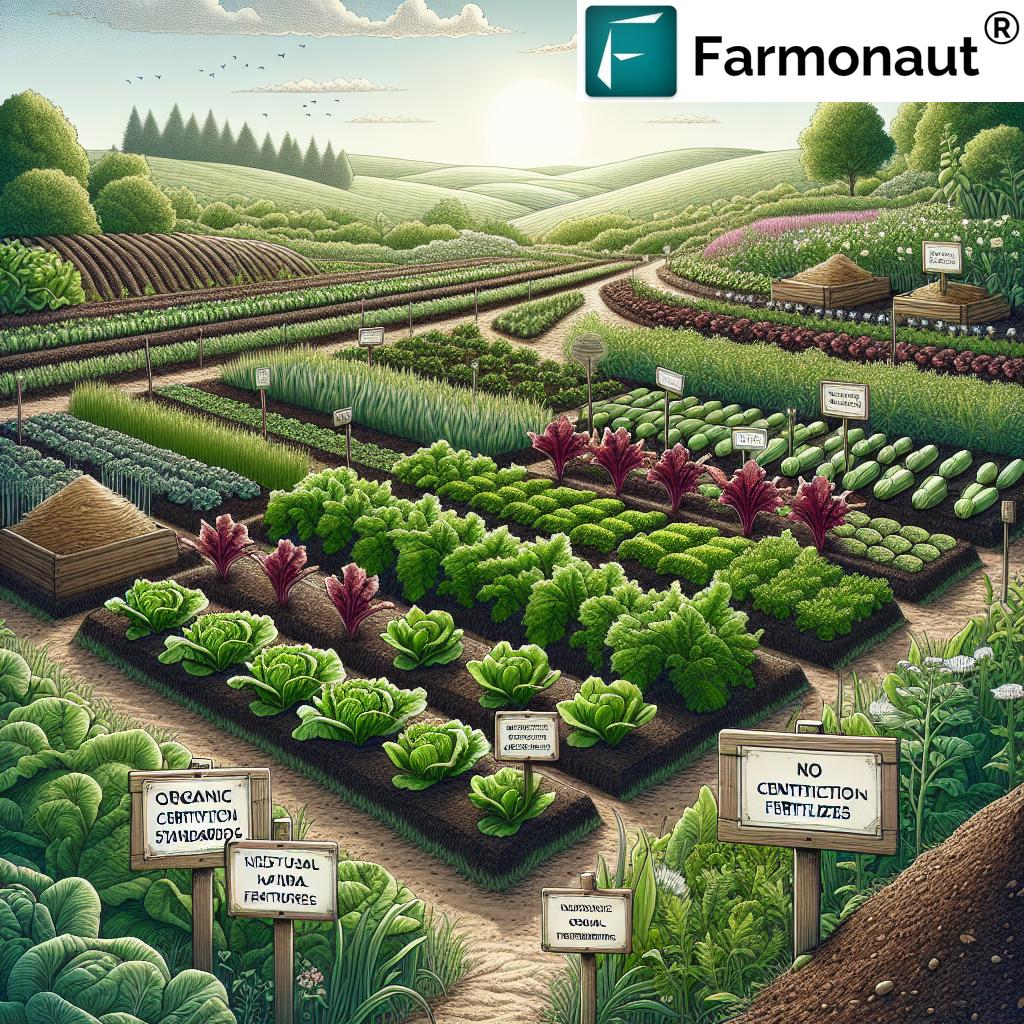Aphid Honeydew, Aphid Pest: 7 Best Control Tips 2025
Table of Contents
- Introduction
- Trivia: Aphid Impact in 2025
- Understanding Aphid Honeydew and Its Impact
- Aphid Pest Challenges in 2025
- Integrated Pest Management (IPM) Strategies
- 7 Best Aphid Control Tips for 2025
- Comparison Table of Aphid Control Methods
- Satellite Tech for Sustainable Pest Management: Farmonaut Solutions
- Expert Videos on Aphid Control Strategies
- FAQ on Aphid Honeydew and Aphid Pest Management 2025
- Conclusion: Sustainable Future Beyond 2025
“In 2025, aphid infestations can reduce crop yields by up to 30% if not managed sustainably.”
Aphid Honeydew and Aphid Pest Management: Implications for Sustainable Agriculture in 2025
Aphids are among agriculture’s most notorious pests, affecting crops, forestry, and horticulture across the globe. Their remarkable adaptability, efficient feeding techniques, and ability to produce honeydew make them formidable threats to crop health and yield. In 2025, with climate dynamics changing and sustainable agricultural practices more essential than ever, an integrated approach to aphid, honeydew, aphid pest management is a top priority for farmers, agronomists, and policymakers. By strengthening our understanding of aphid biology, the role of honeydew, and the latest control strategies, we can protect crops and ecosystems effectively into the future.
Understanding Aphid Honeydew and Its Impact

Aphid honeydew is more than a harmless byproduct; it creates a complex microenvironment that influences crop health and pest dynamics. Here’s how it shapes the ecosystem in 2025 and beyond:
- Sticky Substrate: Aphids excrete honeydew while feeding on plant phloem sap, extracting nutrients and compensating for amino acid deficiencies by consuming vast amounts of sap and excreting excess sugary substances onto plant surfaces.
- Growth of Sooty Mold Fungi: The sticky, sugary honeydew accumulates on leaves, stems, and even fruit, creating a moist, carbohydrate-rich substrate for sooty mold fungi. These dark molds block sunlight, reduce photosynthetic efficiency, and weaken plants.
- Indirect Damage to Crops: Even if aphids are controlled, the lingering honeydew and associated fungi can reduce crop quality and lower yields by blocking sunlight and weakening plant vigor.
- Attraction of Ants & Other Insects: Ants often farm aphids in exchange for honeydew, protecting them from natural predators, which complicates integrated pest management (IPM) strategies. Whiteflies and bees are also drawn, further shifting the dynamics of agronomic ecosystems.
- Altered Micro-Ecosystems: In forestry and horticulture, thick honeydew deposits can disrupt tree and plant communities, affecting overall forest health.
In 2025, the global impact of aphid honeydew cannot be managed by isolated actions—it requires holistic solutions.
“Over 200 species of aphids produce honeydew, attracting harmful sooty mold and disrupting crop photosynthesis.”
Aphid Pest Challenges in 2025: Species, Spread, and Virus Transmission
The primary aphid species threatening global agriculture and forestry in 2025 include the green peach aphid (Myzus persicae), the grain aphid (Sitobion avenae), and the woolly aphid (Eriosoma lanigerum). Their impact is magnified by:
- Rapid Reproduction: Aphids can reproduce asexually, with small populations quickly ballooning into massive infestations in days under optimal conditions.
- Adaptation to Climate: Shifts in weather patterns and rising global temperatures have enabled more frequent outbreaks, even in new regions previously less affected by aphids.
- Feeding and Yield Loss: Direct piercing of plant phloem vessels and nutrient extraction leads to significant yield losses by reducing plant vitality and stunting growth.
- Viral Disease Transmission: Aphids are major vectors of plant viruses like Barley Yellow Dwarf Virus and Potato Virus Y, causing further devastation across a wide variety of crops such as wheat, maize, potatoes, and more.
- Ant-Aphid Mutualism: The mutualistic relationship between ants and aphids remains a unique challenge, as ants actively defend aphid populations for access to honeydew, further complicating biological and chemical control efforts.
With these challenges, sustainable integrated pest management (IPM) that blends the best of biological, cultural, chemical, and technological techniques will continue to be pivotal for success in 2025 and beyond.
Integrated Pest Management (IPM) Strategies Against Aphid Honeydew & Pests
The most successful aphid honeydew, aphid pest management strategies in 2025 are based on the foundation of integrated pest management (IPM). IPM combines multiple control strategies to reduce reliance on single methods (particularly chemical insecticides) and focuses on sustainability and environmental health.
Core Components of Aphid IPM
- Biological Control: Leveraging natural predators (like lady beetles, lacewings, parasitic wasps), and microbial insecticides (entomopathogenic fungi), supports an ecological approach that is highly effective for reducing aphid populations.
- Cultural Practices: Techniques such as crop rotation, intercropping, using aphid-resistant cultivars, and early planting make crops less susceptible to aphids and thus indirectly limit honeydew secretion.
- Chemical Control: Insecticides have a role, but new precision agriculture techniques—like drone-assisted targeted spraying and sensor-based detection—minimize non-target impacts and reduce risks of resistance.
- Mechanical & Physical Barriers: Using row covers, reflective mulches, or traps can reduce initial colonization by flying aphids and disrupt their life cycles.
- Ant Management: Employing techniques such as ant baits or barriers disrupt the ant-aphid relationship, improving biological control effectiveness.
Farmonaut’s app ecosystem enables farmers, forestry managers, and agri-entrepreneurs to access real-time satellite-driven crop health, pest pressure, and resource management data. By leveraging AI and precise monitoring, users can detect early plant stresses, identify aphid hot-spots, and optimize integrated pest management practices for sustainable yield gains in 2025.
Aphid Honeydew, Aphid Pest Control: 7 Best Tips for 2025
Here are the top 7 best aphid control tips—combining biological, cultural, chemical, and technological approaches—for managing aphid honeydew, aphid pest, and supporting sustainable agriculture in 2025:
1. Introduce and Conserve Natural Predators
- Encourage lady beetles (ladybugs), lacewings, hoverflies, and parasitic wasps in agricultural fields.
- Reduce broad-spectrum insecticide use to prevent harming beneficial insects.
- Establish insectary strips or flowering borders to supply food for natural enemies.
By preserving the functional biodiversity of natural predators, we can lower aphid populations and minimize honeydew buildup.
2. Optimize Cultural Practices: Crop Rotation, Intercropping, & Resistant Varieties
- Rotate crops to disrupt aphid life cycles.
- Plant aphid-resistant cultivars where available.
- Use intercropping systems (e.g., pairing cereals with legumes) to confuse or repel aphids and support beneficial insects.
- Adjust planting dates to avoid peak aphid flight periods.
These cultural techniques form the backbone of ecological pest management, reducing aphid infestation pressure and limiting virus transmission.
3. Monitor and Target with Precision Technology
- Use satellite monitoring and drone imagery (via platforms such as Farmonaut) for early detection of plant stress and aphid population hotspots.
- Install in-field sensors for real-time tracking of aphid migration patterns, sap extraction rates, and honeydew secretion intensity.
- Adopt digital scouting through API integrations and mobile apps for timely, targeted interventions and to minimize unnecessary chemical applications.
Check out Farmonaut’s subscription services for advanced pest and crop monitoring. API access and full developer documentation allow seamless integration of real-time agronomic data.
4. Deploy Biological Insecticides for Targeted Control
- Utilize entomopathogenic fungi (e.g., Beauveria bassiana) or Metarhizium spp., which infect and kill aphids without harming beneficials or leaving harmful residues.
- Prefer locally-sourced and approved biocontrol agents for sustainable long-term impact.
5. Responsible Use of Chemical Insecticides
- Reserve chemical insecticides for major outbreaks, and apply only following economic threshold-based decision tools.
- Rotate modes of action to prevent resistance development in aphid populations.
- Use new-generation, selective products that spare beneficial insects.
- Consider drone-based spot-spraying or precision-guided application technology to treat only infested patches.
6. Implement Ant Management Strategies
- Apply ant baits or sticky barriers to tree trunks and crop stems to block ant access to aphids.
- Disturb the ant-aphid relationship and allow natural predators easier access to aphid colonies.
- Use a combination of physical and baits for localized but persistent ant control in both forestry and horticultural systems.
7. Sanitation, Physical Barriers, and Early Weed Management
- Remove heavily-infested or dying plant material from the field and orchard to halt the spread of both aphids and associated honeydew fungi.
- Place reflective mulches, sticky traps, or fine mesh row covers to deter transient aphids and reduce initial colonization.
- Weed control around crops prevents alternative hosts for aphid populations throughout the season.
In combination, these seven strategies empower farmers worldwide to manage aphid honeydew, aphid pest risks for higher productivity, better quality, and a healthier environment in 2025 and beyond.
Comparison Table of Aphid Control Methods for Sustainable Agriculture (2025)
*Effectiveness and costs may vary by crop type, region, and growing system. Integrated IPM strategies generally deliver the best results for both pest management and environmental sustainability in 2025.
Satellite Technology for Sustainable Aphid Pest & Honeydew Management
Farmonaut is at the forefront of enabling modern, sustainable pest and aphid honeydew monitoring through satellite imagery, AI, and blockchain solutions. Here’s what makes our platform a game-changer for sustainable agriculture in 2025:
- Satellite-Based Crop & Forestry Monitoring: We provide real-time, multispectral imagery to accurately detect plant stress signals caused by aphid feeding, honeydew secretion, and sooty mold development. Early detection gives land managers the best chance to act.
- Jeevn AI Advisory: Our AI-led system analyzes imagery and agronomic trends to offer advice on optimal pest control timing, hotspot analysis, and strategies for protecting forest and crop health against aphids and secondary issues like mold and virus spread.
- Blockchain Product Traceability: Through our traceability solution, exporters, processors, and regulators can follow crops and products from field to shelf, enabling full transparency across the supply chain—especially for quality-sensitive produce affected by aphid honeydew and related molds.
- Resource & Carbon Footprint Management: For farms and forestry operations aiming for strict sustainability, our carbon footprint & impact tracking allows for actionable insights and compliance with global environmental standards.
- Smart Farm Management at Any Scale: Whether an individual farmer or a large agri-business, our large-scale farm management tools are flexible, scalable, and accessible via web, Android, and iOS.
By integrating advanced technological solutions with core IPM principles, Farmonaut empowers users to maximize crop productivity while reducing environmental impacts and supporting a resilient agriculture sector for 2025 and beyond.
Expert Videos: Aphid Control, IPM, and Plant Health
Expand your knowledge with these current, expert video resources on aphid control strategies, pest management, and sustainable farming tactics:
- Mastering Aphid Control: From Yellow to Hairy, Indoor to Outdoor—A Comprehensive Guide
- Soybean Aphid Control: Effective Scouting and Control Strategies for Optimal Crop Yield
- Aphid Control on Farms: Grounded Strategies for Sustainable Pest Control
- Bug & Spot Battle: Safeguarding Citrus—Aphid & Foliage Health Management
- Organic Alfalfa Defence: Integrated Pest Management for Aphids and Mosaic Virus Control
- Spinach Peptide Bio-Pesticide 2025: Ends Citrus Greening & Zebra Chip—Texas Yield Skyrockets!
- Farmonaut®’s Traceability Solution for Honey
FAQ: Aphid Honeydew, Aphid Pest & Control Strategies for 2025
Q1. What is aphid honeydew, and why is it a problem for crops in 2025?
Aphid honeydew is a sticky, sugary substance excreted by aphids as they feed on plant phloem sap. In 2025, excess honeydew not only attracts sooty mold fungi (reducing photosynthesis and crop quality) but also encourages ant protection of aphids and disrupts the balance between pests and their natural predators. This can decrease both yield and ecosystem health.
Q2. Which crops and regions are most at risk?
Crops such as wheat, maize, potato, citrus, and vegetables across all major agricultural regions (Asia, North America, Europe, Africa, South America) remain at high risk due to the spread of green peach aphid (Myzus persicae), grain aphid (Sitobion avenae), and other species—especially under changing climate scenarios in 2025.
Q3. How do ants worsen aphid infestations?
Ants “farm” aphids for their honeydew secretion, protecting them from natural predators and biological controls. This mutualism means pest populations often increase in the presence of ants, making integrated management (including ant baits and barriers) more important than ever.
Q4. What is the best sustainable way to manage aphid pests in 2025?
A robust Integrated Pest Management (IPM) strategy is best—combining biological control, cultural practices, cutting-edge technology like satellite monitoring, responsible use of selective insecticides, ant management, and sanitation. The table above summarizes the comparative value and sustainability of each method.
Q5. How can Farmonaut help with aphid and honeydew monitoring?
Farmonaut offers satellite, AI, and app-based solutions for field health and pest monitoring. Users can detect pest stress, receive advisory recommendations, and access traceability data—empowering real-time, cost-effective, and scalable pest management decisions for sustainable productivity.
Conclusion: Towards a Resilient and Sustainable Agricultural Future
Aphid honeydew, aphid pest management are no longer about quick fixes; they demand an integrated, science- and technology-led approach. With our rapidly evolving agricultural landscapes, increasing aphid adaptability, and global challenges like climate change, only the most adaptable, sustainable solutions will safeguard food security and environmental health in 2025 and beyond.
By leveraging core IPM principles, embracing satellite-based agricultural technologies like Farmonaut’s real-time monitoring and advisory platforms, maintaining ecosystem resilience through biodiversity, and investing in education and innovation, we can minimize the impact of aphid honeydew, aphid pests, and upkeep our commitment to sustainable productivity.
Stay vigilant, stay informed, and adopt the “7 Best Control Tips” for a productive, sustainable 2025.
Explore more on Farmonaut’s full-service platform for carbon footprint monitoring, fleet management, traceability, and large-scale farm monitoring—equipping you for every pest and crop challenge ahead.











